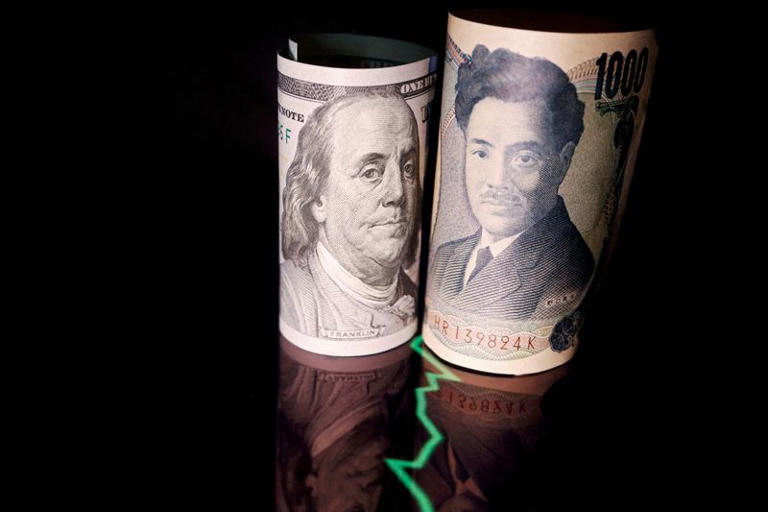On Wednesday, the dollar experienced a widespread surge in value against various currencies, particularly against the Japanese yen, reaching its highest level against the yen since the mid-1990s. This substantial movement in the foreign exchange market was catalyzed by a notable uptick in U.S. inflation for the month of March, which exceeded economists’ expectations. As a result, market sentiment shifted, leading traders to reconsider their projections for the Federal Reserve’s monetary policy stance.
The focal point of this market reaction was the release of the U.S. Consumer Price Index (CPI) data, revealing a 0.4% increase on a monthly basis in March. This surpassed the forecasted 0.3% rise, indicating heightened inflationary pressures in the economy. Additionally, on an annual basis, the CPI surged by 3.5%, outpacing economists’ expectations of a 3.4% growth. Core inflation, which excludes volatile food and energy prices, also exhibited robust growth, expanding by 0.4% month-on-month and 3.8% annually, exceeding projections.
In response to the unexpected inflationary surge, traders swiftly adjusted their expectations for the Federal Reserve’s interest rate policy trajectory. The probability of a rate cut in June plummeted to 17%, down from 57% the previous day, according to the CME’s FedWatch tool. Instead, market participants now anticipate a rate cut in September, with a 66% likelihood. This significant revision in rate cut expectations prompted a reassessment of the overall outlook for monetary policy easing, with the number of anticipated rate cuts for the year being reduced to under two, down from previous estimates of three or four.
Joseph Lavorgna, chief U.S. economist at SMBC Nikko Securities in New York, highlighted the sustained acceleration in core inflation over the past four months, suggesting a delayed timeline for potential Fed easing measures. Lavorgna emphasized that any moderation in inflation would require substantial evidence and time, given the elevated starting point of inflation rates.
Against this backdrop, the dollar index, a measure of the dollar’s performance against a basket of major currencies, surged by 1.07% to 105.20, marking its largest daily gain since March 2023. This rally pushed the dollar to its highest level since November, reflecting renewed investor confidence in the greenback’s strength. Minutes from the Federal Reserve’s recent meeting underscored concerns among central bank officials regarding the deceleration in inflation progress, signaling a potential prolongation of the current monetary policy stance.
Kenneth Mahoney, president at Mahoney Asset Management in Greenwich, Connecticut, emphasized the Fed’s disinclination to reduce rates amidst persistent inflationary pressures, characterizing it as a significant realization for market participants. This sentiment underscores the Fed’s commitment to maintaining a vigilant stance against inflationary threats, which could influence future market dynamics.
In contrast, the euro faced downward pressure against the dollar, depreciating by 1.06% to $1.0741, poised for its most substantial one-day decline in approximately a year. Similarly, against the Japanese yen, the dollar exhibited strength, climbing by 0.93% to 153.15 yen, touching its highest level since June 1990.
Traders remained attentive to the prospect of intervention by Japanese authorities to stabilize the yen’s decline. Despite Japan’s recent exit from negative interest rates, the yen has continued to weaken, prompting speculation about potential intervention measures. Adam Button, chief currency analyst at FOREXLIVE, estimated a 30% probability of intervention by Japanese authorities in response to the yen’s rapid descent.
Overall, the dollar’s robust performance, fueled by unexpected inflation data and revised Fed rate cut expectations, underscored its resilience in the face of evolving market dynamics. This surge in the dollar’s value against major currencies highlighted the significance of inflationary pressures in shaping monetary policy expectations and driving currency market movements.
